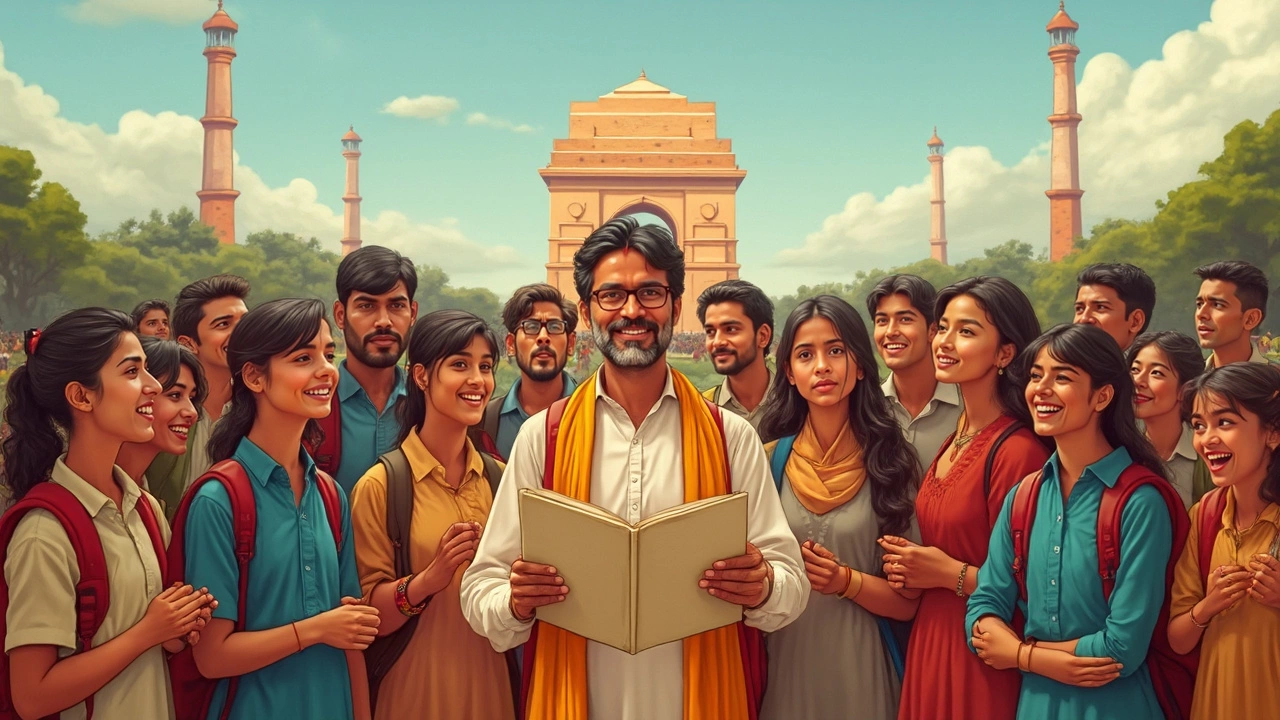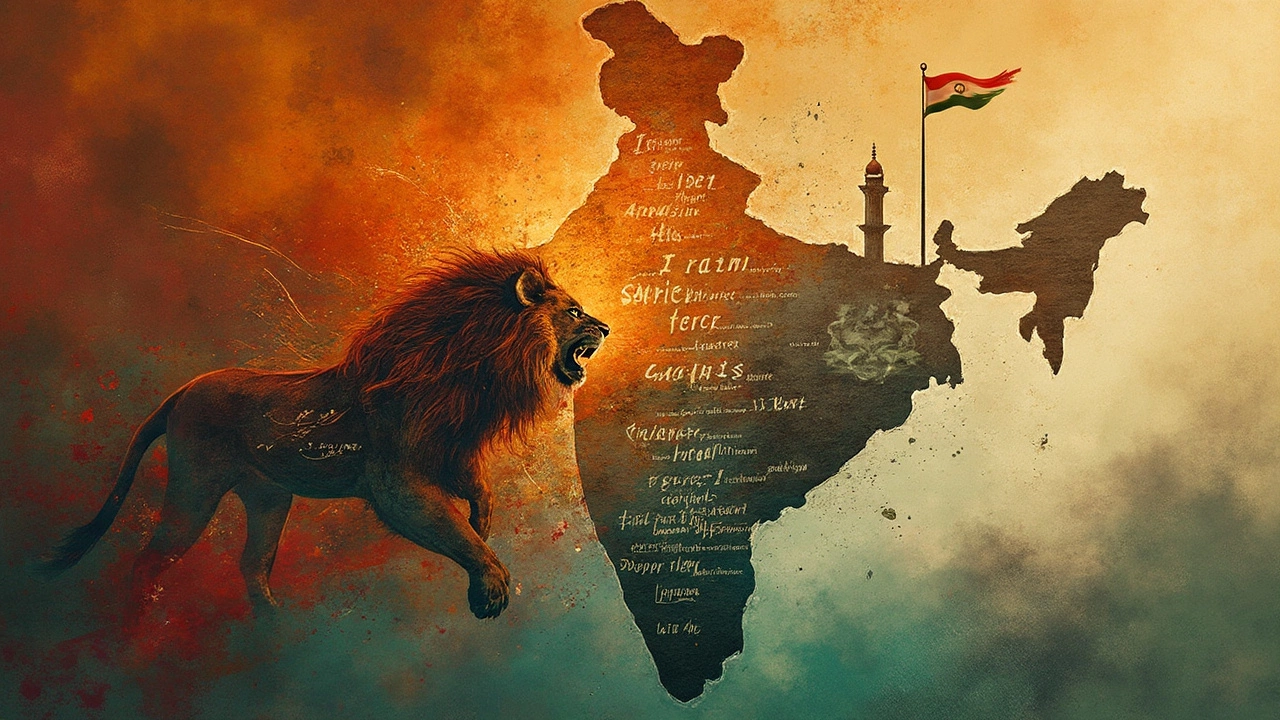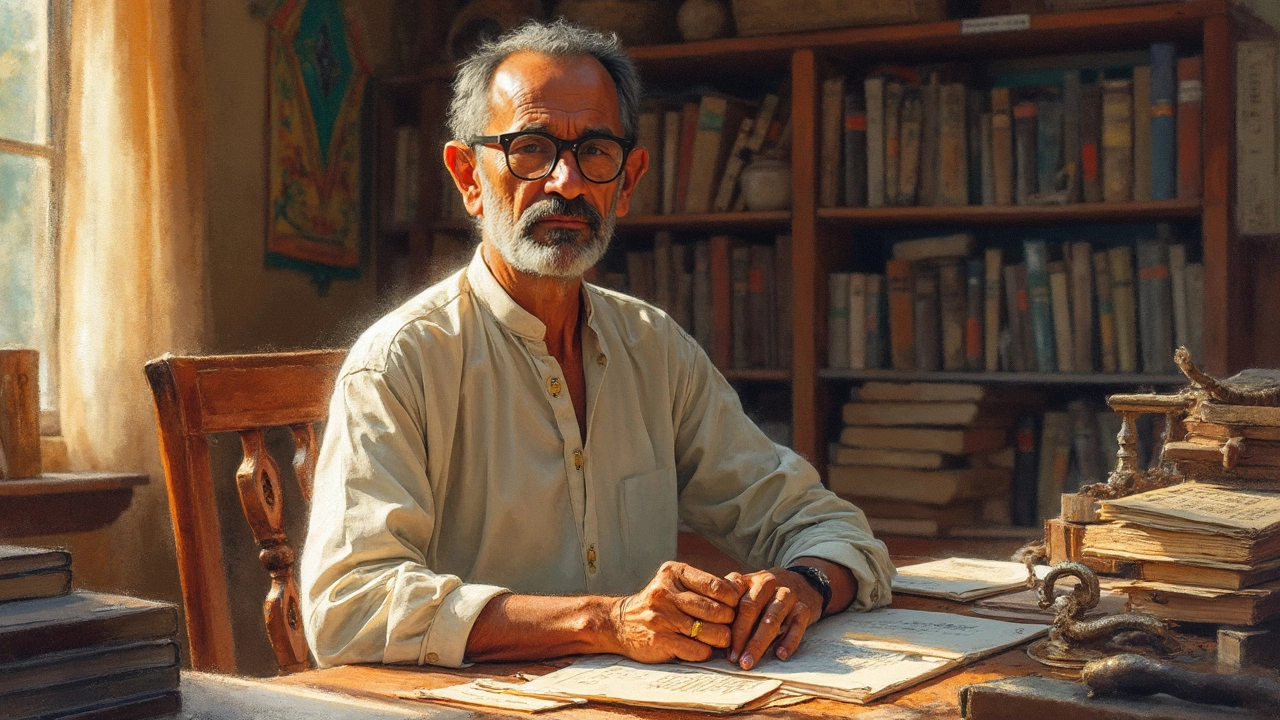Picture a young kid in a windswept Bihari village, waiting for his mother’s call as twilight set in, scribbling verses on whatever scrap of paper he can find. Now fast forward a few decades, and imagine those same words stirring up an entire country and defining its spirit long after independence. India’s idea of a “national poet” is less about medals or government certificates and more about how deeply someone’s words run through people’s veins—making you want to write, speak, and act. The title “Rashtrakavi,” which translates directly as ‘National Poet,’ sits not only as a badge of pride but as a mark of overwhelming influence. So, who is celebrated as India’s national poet? That honor belongs to Ramdhari Singh Dinkar, a name you might have heard in classrooms or seen quoted on social media when a protest breaks out or national pride soars.
Dinkar’s story isn’t all roses and awards. He was born in 1908 in a small village in Bihar. His family wasn’t wealthy, and his childhood was marred by the loss of his father at a young age. Back then, education meant walking miles to reach the nearest school, with a stomach that often grumbled more than the chalk on the blackboard. But even as a student, Dinkar’s unique grasp of Hindi, coupled with a fiery urge for freedom, pushed him into the limelight. Unlike some poets who stick to themes of love and longing, Dinkar’s poetry speaks directly about justice, rebellion, and hope—qualities that resonated in the air when India was drumming up its courage against colonial rule.
Ramdhari Singh Dinkar: The Voice of a Nation
Calling Dinkar “the national poet of India” isn’t some random internet trivia—it’s official. In 1959, the Government of India honored him with the title “Rashtrakavi.” The timing wasn’t a coincidence. This was when the country was finding its legs post-independence, looking not just for bureaucrats and politicians but for voices that could shape collective thinking. Dinkar, through his poems, did just that. His writing bridges the gap between the country’s classical heritage and its contemporary political landscape.
His works like “Rashmirathi” and “Kurukshetra” aren’t just collections of stanzas; they echo the struggles and dilemmas Indians face every day. He drew from stories of Mahabharata and Ramayana but twisted them, making old characters speak of modern-day worries—duty, patriotism, and sacrifice. If you ever feel goosebumps reading lines like “Singhasan khali karo ki janata aati hai” (“Vacate the throne, for the people are coming”), that’s Dinkar. Politicians, freedom fighters, and your average schoolteacher, all have recited those lines. It’s truly something when your kid comes home, quoting a Dinkar poem after a debate at his London school—makes you realize his reach crosses not just state lines but also continents.
Dinkar’s versatility also stands out. While he’s most famous for his nationalistic poetry, he was equally at ease writing about love, mythology, and even science—a rare feat for his era. He served as a Professor at Bhagalpur University, and he was a member of the Indian Parliament (Rajya Sabha), which made him familiar with both grassroots struggles and the highest corridors of power. And he wasn’t just acclaimed in the Hindi-speaking heartland—his poems were translated into numerous Indian languages, and his speeches drew crowds from Chennai to Punjab. Dinkar received the Padma Bhushan in 1959 and after his death in 1974, the government issued stamps and named schools and scholarships after him. But maybe his real achievement is how lines from his poetry find their way into everyday conversation, Instagram bios, and campaign speeches even today.
If you want to truly get what the title ‘national poet’ means, read his works aloud. His language isn’t flowery, but it’s sharp and clear—each line builds a rhythm that makes you want to stand straighter, dream bigger, and act bolder. Dinkar’s body of work isn’t just literary treasure; it’s a handbook for courage. If you ever feel that collective Indian anxiety—the itch to protest injustices, the boredom of routine, the worry about where the country is headed—chances are, Dinkar has written something about it.

The Meaning of ‘National Poet’ in India
In India, titles like “Rashtrakavi” aren’t handed out every Monday morning at a staff meeting. It’s a rare badge. Only a select few earn this spot by resonating with everyday people for decades. Dinkar shares this glory with very few—other names like Subramania Bharathi (Tamil) and Rabindranath Tagore (Bengali) are celebrated as “national poets” in their respective linguistic traditions, but in Hindi, Dinkar tops the list. His poetry is often the centerpiece of Republic Day and Independence Day ceremonies, paraded in school halls and on state TV. Teachers use his words to motivate students before exams, and political leaders quote him to wake up voters before elections.
But why did Dinkar stand out? For one, his writing told hard truths—no sugarcoating. He called out the timid, praised the brave, and demanded that Indians refuse to settle for less. His famous poetry collection “Rashmirathi” follows Karna—a Mahabharata warrior often overshadowed by his legendary peers—which Dinkar uses to subtly question social prejudices and narrow-mindedness of modern society. Kurukshetra deals directly with post-war trauma, the price of peace, and whether violence can ever truly solve anything. These themes hit home for generations growing up in the shadow of Partition, wars, and social upheavals. Dinkar’s ability to mix mythology and modern fears is what keeps him relevant. His metaphors are vivid—he compares democracy to the ever-flowing Ganga, or describes national duty as a sacred fire that should never be allowed to fizzle out.
A lot of Indians see Dinkar’s life as a roadmap: from rural poverty to national limelight, all through reading, writing, and fighting the good fight. His words encourage people to value education, speak out when something is wrong, and remember the sacrifices that built today’s India. An interesting thing is how Dinkar never shied away from criticizing his own heroes. He even reminded Gandhi and Nehru that true independence wasn’t just about driving out the British but about empowering the common man—making the title national poet of India much more than honorary.
If you’re wondering whether modern poets can take up the same torch, you’ll notice that few have managed to stir hearts quite like Dinkar. His legacy extends far beyond his lifetime; even now, students write their essays about him, his poems trend during social movements, and his words get quoted in music and cinema. Techies in Mumbai, farmers in Punjab, and students sitting for the IAS exams all seem to relate with his message about self-respect and standing together. This isn’t an accident; this is what happens when your poetry becomes folk wisdom and not just stuffy textbook material. It’s also hilarious that so many memes about bureaucracy and Indian politics end up using Dinkar’s lines to make a point—proving that ‘national poet’ can mean legend and pop culture hero at the same time.
You might be surprised to learn that Dinkar’s influence crept into policy-making as well. He was a member of the Rajya Sabha (Upper House of Parliament) and often quoted his own poems to support his arguments on justice and equality. This is not someone who retired into obscurity after a couple of awards. When Parliament holds special sessions remembering leaders who shaped the country, Dinkar’s poetry opens the event—because he knew how to say in four lines what most people couldn’t say in a four-hour speech.

How to Explore and Connect With Dinkar’s Poetry
If you’re new to Dinkar’s work or want to go beyond what textbooks force you to memorize, start with “Rashmirathi.” You can find translations in English and other Indian languages, but the Hindi original really crackles with energy. Don’t just read it silently: say it out loud, even if you stumble; his verses were designed to be spoken, shared, and shouted from rooftops. If you’re interested in the stories behind the poems, look for biographies or documentaries—many streaming services around June and August (close to his birth and death anniversaries) push out restored interviews and readings.
Dinkar’s poems are special because they make you look at your own dilemmas differently. Let’s say you’re struggling with something at university or stuck in a job rut—pick up his poems on resilience and fighting spirit, and you’ll find yourself straightening up, feeling a little less alone. My son, Rohan, got into Dinkar after watching a YouTube debate featuring excerpts from his work. It opened up a whole conversation at home about courage, duty, and country—topics that, honestly, don’t often come up until exam night or when someone’s lost a cricket match.
If you want to impress at an Indian cultural evening, here’s a tip: memorize a couple of strong lines from “Singhasan Khali Karo” (“Empty the throne, the people are coming”). Not only will you win some kudos for quoting Dinkar, but it also makes for an easy conversation starter. If you’re planning a trip across Bihar, you can visit the Dinkar Smriti (memorial) in Begusarai, which has preserved his manuscripts and mementoes.
Dinkar’s books are widely available at Indian bookstores, and digital versions are popping up on Kindle, Google Books, and free public domain libraries. If original Hindi trips you up, try audio versions—Amazon Audible or YouTube channels that focus on Indian classics. There are even “Dinkar Diwas” events that bring students, writers, and senior citizens together every year in several Indian cities, reading and performing his verses.
For teachers and parents, Dinkar’s work is a treasure chest for introducing kids to Indian values without boring them with moral lectures. His stories don’t preach; they pose questions, create tension, and drop you right into the heart of a choice. The more you read, the more you’ll appreciate how every era, every new challenge, finds answers hidden in those energetic lines.
To really get the spirit of the “national poet of India,” let his poetry provoke you. Challenge his metaphors, relate them to what you see in today’s headlines, and share your reactions. That’s what keeps Dinkar alive—when his poems are being debated in dorm rooms, classrooms, and Whatsapp groups. He’s less a distant legend and more our country’s conscience in rhyme. His fingerprints are all over how we think about justice and nationhood today—and isn’t that exactly what a true national poet should do?
